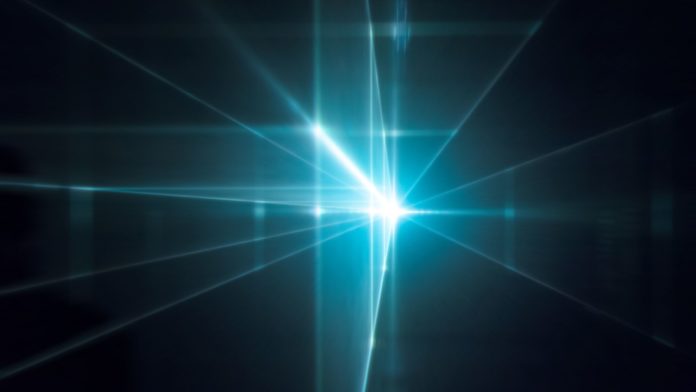Recently, scientists came to know that light can be twisted. This property of light is called angular momentum. Beams with highly structured angular momentum are said to have orbital angular momentum (OAM) and are called vortex beams. They appear as a helix surrounding a common center, and when they strike a flat surface, they appear as doughnut-shaped.
While working with OAM beams, a team of scientists from several institutions in Spain and the U.S. have discovered a new property of light—self-torque.
Self-torque is an inherent property of light, distinguished from the mechanical torque exerted on the matter by static-OAM beams.
During the experiment, scientists fired two lasers at a cloud of argon gas—doing so forced the beams to overlap, and they joined and were emitted as a single beam from the other side of the argon cloud.
Scientists then wondered what might occur if the lasers had diverse orbital angular momentum and if they were out of sync. This resulted in a beam that looked like a corkscrew with a gradually changing twist.
Moreover, when the beam struck a flat surface, it looked like a crescent moon.
Scientists noted that looked at another way, a single photon at the front of the beam was orbiting around its center more slowly than a photon at the back of the beam. The researchers promptly dubbed the new property self-torque—and not only is it a newly discovered property of light, but it is also one that has never even been predicted.
The researchers suggest that it should be possible to use their technique to modulate the orbital angular momentum of light in ways very similar to modulating frequencies in communications equipment. This could lead to the development of novel devices that make use of manipulating extremely tiny materials.
Study co-author Kevin Dorney, a physical chemist at the JILA laboratory run by the University of Colorado, Boulder, and the National Institute of Standards and Technology said, “We’re always discovering new things in science, but it’s not that often you discover a new fundamental property.”
“The property is so new that the immediate applications are not obvious.”
Alan Willner, an electrical engineer at the University of Southern California, Los Angeles, who was not involved in the recent work, said, “It’s just so exciting and fascinating. It’s like a gift that keeps giving.”
The paper is published in the journal Science.
